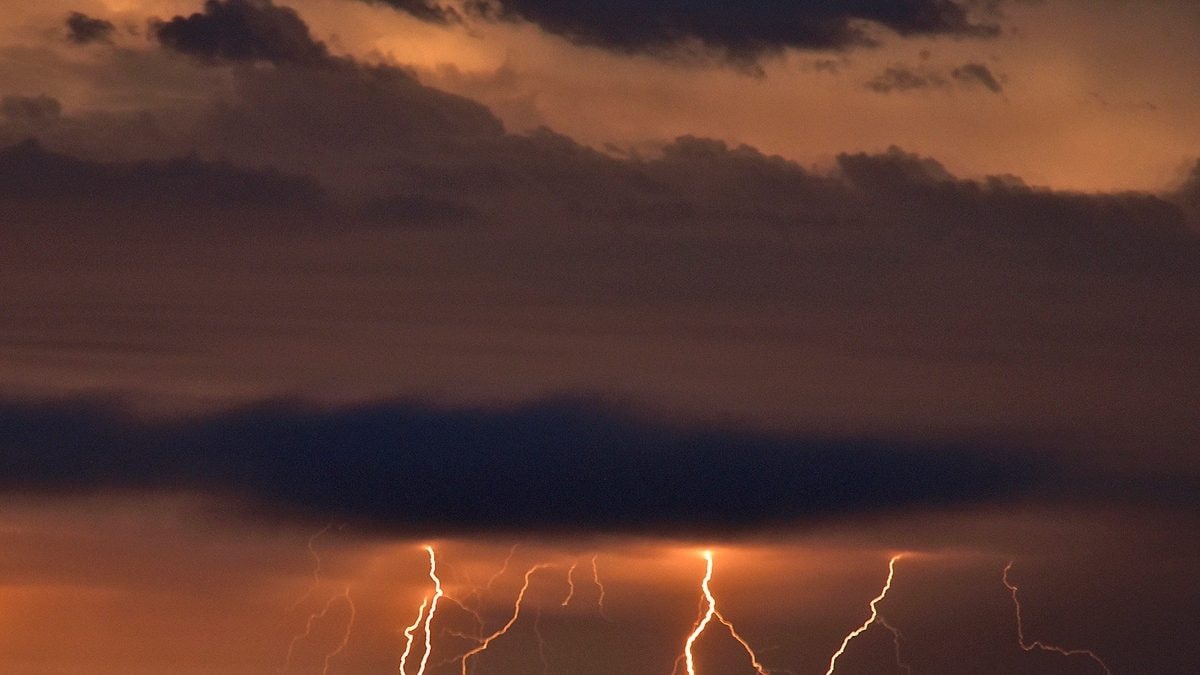The devastating loss of seven lives and the injuries sustained by three others in a lightning strike in Chhattisgarh’s Balodabazar-Bhatapara district serves as a stark reminder of the dangers posed by this natural phenomenon. This tragedy highlights the need for greater awareness and preventive measures to safeguard against lightning strikes, especially during monsoon seasons.
The Tragic Incident
On Sunday evening, a group of men were working in a field in Mohtara village when a sudden downpour led them to seek shelter at the edge of a nearby pond. However, their refuge turned into a scene of horror as a bolt of lightning struck, claiming the lives of seven individuals, identified as Mukesh (20), Tankar Sahu (30), Santosh Sahu (40), Thaneshwar Sahu (18), Pokhraj Vishwakarma (38), Dev Das (22), and Vijay Sahu (23). Three other men were injured and immediately taken to a hospital for treatment. The tragedy left the entire community reeling in shock and sorrow.
Understanding Lightning Strikes
Lightning is a powerful natural phenomenon that occurs when an electrical discharge takes place between a storm cloud and the earth. The electric current generated can reach millions of volts and temperatures exceeding 50,000 degrees Fahrenheit. These extreme forces can be deadly if encountered directly.
Factors Contributing to Lightning Strikes
Several factors can contribute to an increased risk of lightning strikes:
- Thunderstorms: Thunderstorms are the primary source of lightning, with the presence of strong updrafts and downdrafts facilitating the separation of positive and negative charges in the atmosphere.
- Proximity to Tall Objects: Tall structures like trees, buildings, and even power lines can act as lightning rods, attracting strikes due to their height.
- Open Fields: Open fields and areas with minimal cover offer little protection against lightning. Individuals working or playing in such locations are particularly vulnerable.
- Bodies of Water: Water can act as a good conductor of electricity, making bodies of water like ponds, lakes, and even puddles potential pathways for lightning strikes.
Safety Measures During Lightning Storms
Knowing how to stay safe during a thunderstorm is crucial to prevent lightning injuries. The following measures can significantly reduce your risk:
Immediate Action
- Seek Shelter: Find a fully enclosed building or a hard-topped vehicle during a lightning storm. Do not seek shelter under trees, as they can attract lightning.
- Avoid Water: Stay away from bodies of water like lakes, ponds, rivers, or even puddles, as these can conduct electricity.
- Stay Away from Metal Objects: Avoid contact with metal objects like fences, plumbing, or even electrical appliances, as these can carry an electric current.
Precautionary Measures
- Be Aware of Weather Conditions: Monitor weather forecasts and be aware of the possibility of thunderstorms.
- Stay Informed: Learn the signs of an approaching thunderstorm, including changes in the sky, wind patterns, and rumbling thunder.
- Prepare an Emergency Plan: Develop a plan with your family or colleagues that outlines safety procedures during lightning storms.
The Importance of Community Education and Preparedness
The tragic event in Mohtara village underscores the need for greater community education and awareness regarding lightning safety. By disseminating information about lightning risks, preventive measures, and emergency procedures, individuals can make informed decisions and protect themselves from potential dangers.
Government Initiatives
Government agencies and local authorities play a vital role in promoting lightning safety by:
- Public Awareness Campaigns: Conducting campaigns to educate the public about lightning risks, preventive measures, and first aid protocols in case of lightning strikes.
- Early Warning Systems: Establishing early warning systems that provide timely notifications of impending thunderstorms, enabling individuals to take shelter or adjust outdoor activities.
- Lightning Detection Systems: Installing lightning detection systems to track lightning activity and alert emergency services about potential strikes.
Community Involvement
Community involvement is crucial in strengthening lightning safety measures:
- School Education: Integrating lightning safety lessons into school curricula to instill safety practices at a young age.
- Community Meetings: Holding community meetings to disseminate information, discuss preparedness strategies, and share best practices.
- Volunteer Programs: Training volunteers to conduct lightning safety awareness programs within their communities.
Take Away Points
The recent lightning strike tragedy in Chhattisgarh is a sobering reminder of the need to prioritize lightning safety. By understanding the risks, following preventive measures, and promoting awareness in our communities, we can work together to mitigate the dangers of this powerful natural force.




